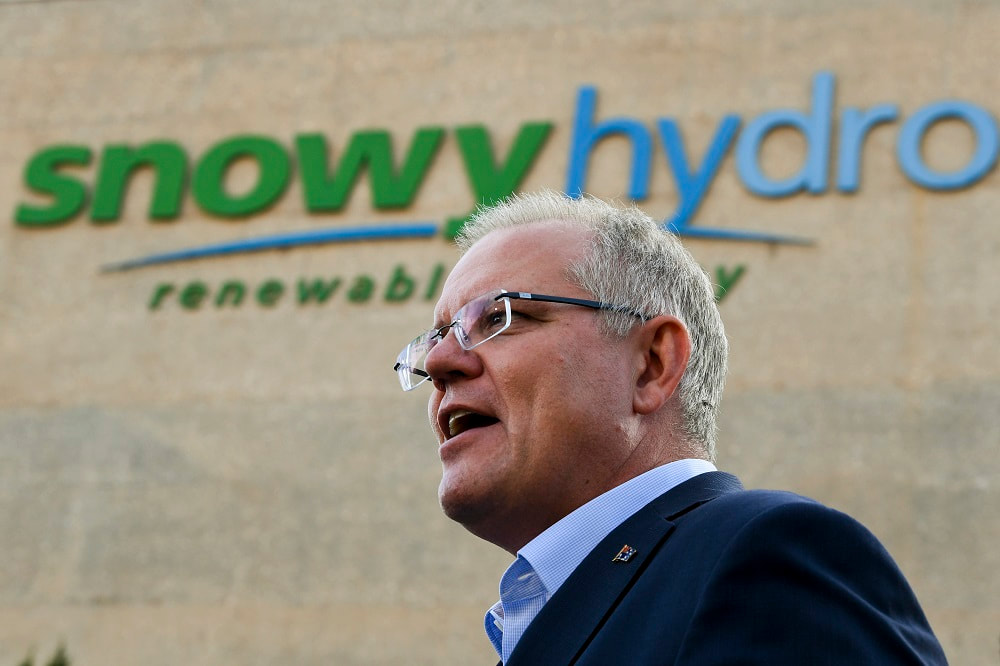|
Scott Morrison's lips were moving, but the words he spoke about renewable energy came straight from Tony Abbott and Malcolm Turnbull.
The climate debate has consumed the coalition for more than a decade, with both former prime ministers laying down rules their successors have struggled to break from. Morrison made this week about renewable energy. It's important to undecided voters, and large parts of the Liberal party. But climate change is an old wound for the coalition, constantly ripping open and being stitched back up in painful ways. The scar tissue means Morrison can't stray too far from what's already been laid down. So on Monday he started with an extension of the Emissions Reduction Fund, which will get an extra $200 million a year over a decade. It was Abbott's scheme under his direct action policy, which replaced the carbon tax. The carbon tax was an entirely "liberal" solution because it put a market price on carbon, made polluters pay for it, and used the money to invest in renewable energy. Abbott's scheme instead used taxpayers' money to pay big polluters to change their dirty ways. Turnbull called it a "fig leaf" and fiscally reckless. It's not a shock that emissions, which were dropping under the carbon tax, started rising again under Abbott. When Turnbull took over he sought to replace it with the National Energy Guarantee, but everyone knows how that went. Abbott's fund represented the acceptable version of emissions reduction for the right wing of the coalition, so rather than change it, Morrison has extended it. "It is important to have balance in your emissions reductions policies. You’ve got to have the cool head as well as the passionate heart, which is our approach.," Morrison said in a 40-minute speech. Labor was less kind. "The ERF has been something we’ve opposed since it was introduced by Tony Abbott almost a decade ago," Labor frontbencher Mark Butler told reporters. "Remember at that time Malcolm Turnbull described it as a fig leaf to cover a determination to do nothing and a recipe for fiscal recklessness on a grand scale." Pumped hydro was Turnbull's vision instead, and he managed to sell sceptical right wingers on it. Perhaps because hydro power has a long history in Australia and in a more visceral sense it has a physical presence than 'airy fairy' wind and solar projects might lack. Concrete. Steel. Giant pieces of infrastructure holding back the forces of nature and bending them to humanity's will. The right wing was okay with it, so Snowy 2.0 was well in train when Morrison took over. A second Basslink cable and more pumped hydro in Tasmania was on Turnbull's agenda too - Morrison announced it all. "If you want to have a renewables future, you’ve got to have big batteries like this," Morrison said in Tasmania. The rules are set. Morrison is sticking with Abbott's vision for paying big polluters and with Turnbull's vision to get more reliable, renewable power into the system. Even as Labor is promising a stronger shift to renewable energy, Morrison is holding to the 26 to 28 per cent emissions cut Tony Abbott promised the world. The prime minister is not sticking his neck out on a new version of the National Energy Guarantee, which Morrison helped design and defended staunchly until the spill. He lacks time to develop major new initiatives before the May election, but he needed to quell pressure from his own side about a lack of climate policy. This week might have been the best he could do within the limits - a big investment in Snowy 2.0, more to come in Tasmania, and efforts to reduce emissions in line with Abbott's plan. But the prime minister had to play within the rules his predecessors laid down. Straying too far right now is a recipe for trouble. Will it be enough to win over undecided voters? Will it even be enough to hold on to progressive Liberals? Morrison doesn't have long to wait to find out. |
Archives
June 2019
Categories |

 RSS Feed
RSS Feed